Good morning! I’ve got a lot to chat with you about in the coming days, as we pull together the projects that we’re working on here in the studio.
My goal this week is to set up the “final” version of a project sample I’ll be stitching over the next couple weeks.
It’s a small, spring-bright, happy project that I want to use to focus on how metallics can be incorporated into hand embroidery projects in a subtle but effective way, to add a little touch of sparkle and life. I showed you some testing for it a little while back.
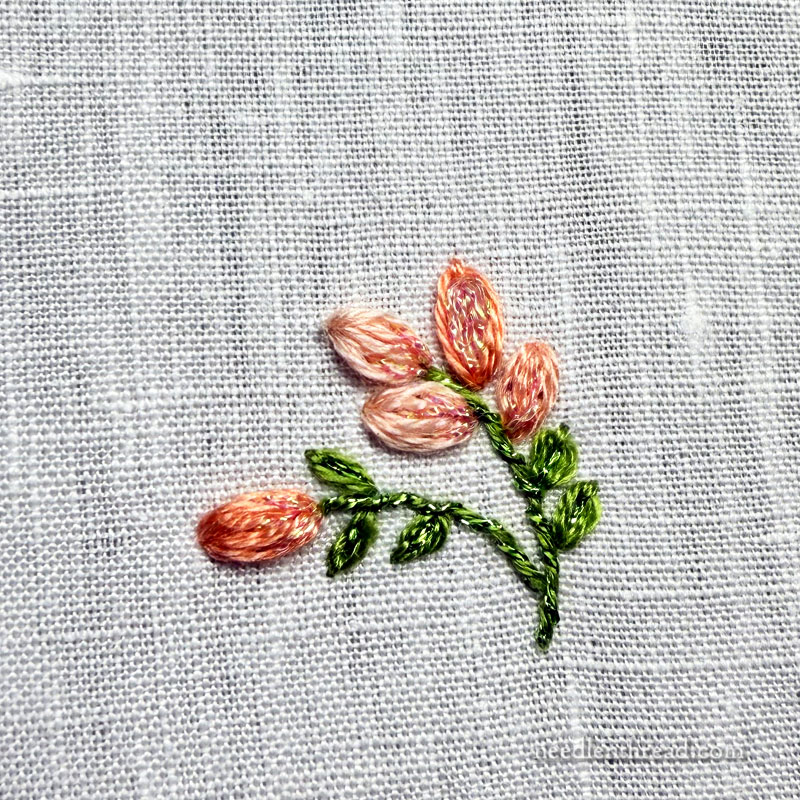
I know many people are excited about the new shaded metallic thread sets that I’ve been writing about. I wrote about them here as well, introducing the purple set.
Metallics have been used pretty widely for a while in the counted work and needlepoint worlds, but perhaps not as widely in the surface embroidery world. I’m sure many of us have dabbled with them, but they are much more prevalent in counted and needlepoint niches than in surface embroidery.
One reason that we don’t see metallics used as widely in surface embroidery is that metallics have a reputation for being really finicky and frustrating to work with, especially if you’re passing them in and out of closely-woven fabrics (as opposed to fabrics and canvases with pre-determined holes).
I’ve been writing about Au Ver a Soie’s metallics for 13 or more years. I wrote about them particularly here in 2017 establishing my case for liking them. And I wrote about them here, when I used them for the plaited braid stitch in 2012. But I’ve been using them even longer!
With these Au Ver a Soie metallics that are now becoming more widely available in the US, the cranky persnicketiness is not really an issue. These threads are engineered to pass through fabric. They don’t frustrate the stitcher like most metallics do.
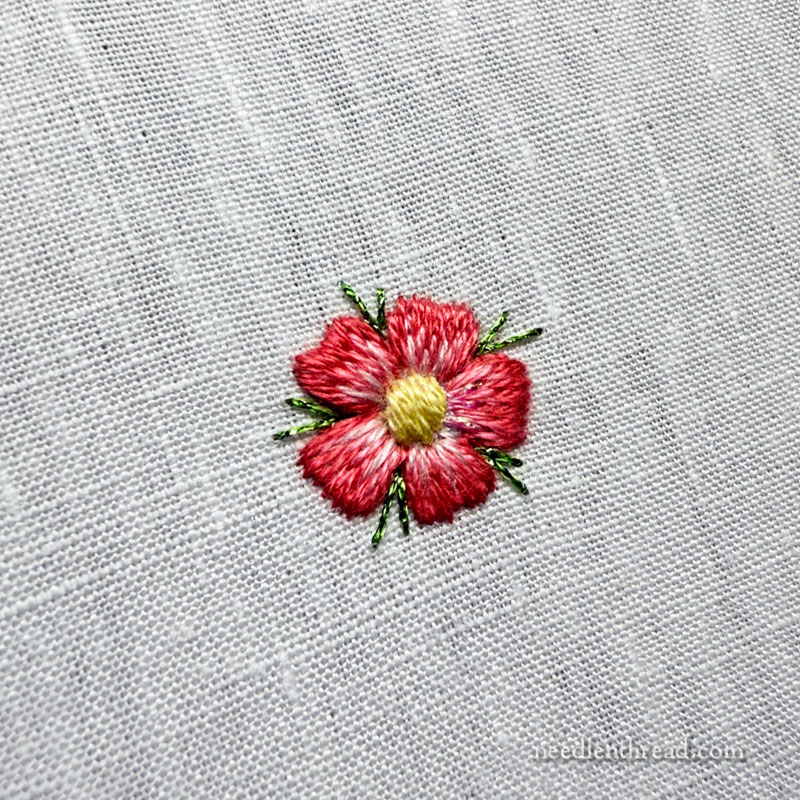
But as the threads become more widely available and stitchers come into contact with them more frequently, many surface embroiderers are pondering how to incorporate them into regular surface embroidery projects in ways that make sense.
Whole Project vs Accent Threads
For me, metallics aren’t necessarily “whole project” threads. I use them as accent threads. I like them because they can add just a nice touch of sparkle – and even a bit of whimsy – to certain projects. I wouldn’t necessarily use them in every embroidery project or every type of design or with every type of surface embroidery technique.
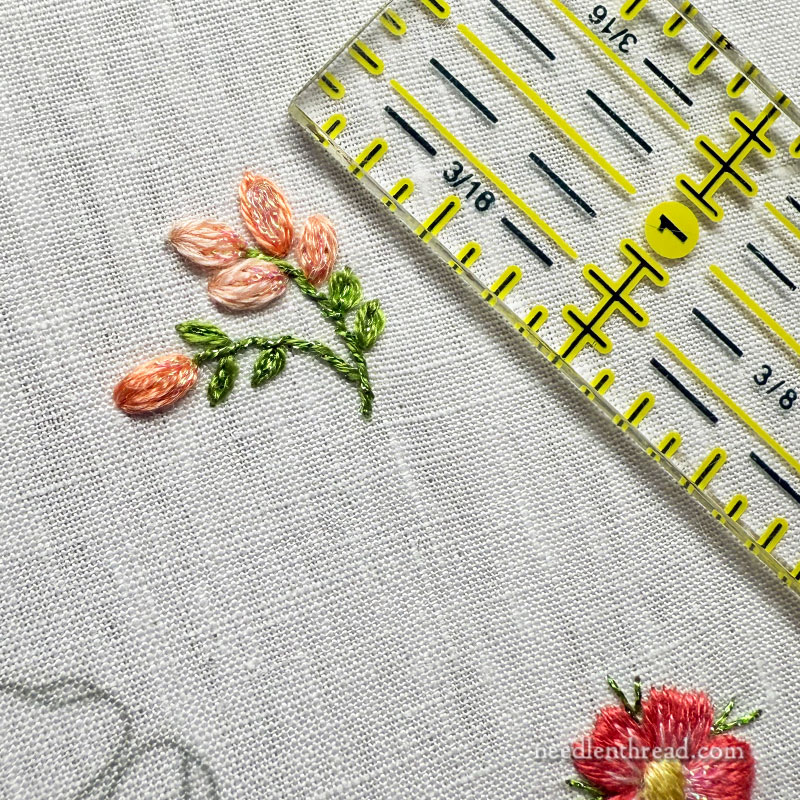
On the design I’m working on, I’m incorporating just little touches of metallics throughout the small design.
And it is a small design!!
The ruler in the photo above gives you a sense of the size of some of the individual elements in the design.
The nice thing is, when you use metallics as accents in a small design like this, it doesn’t take a whole lot of thread! And that leaves you with lots of metallics to use on larger projects or to incorporate into many small projects.
I like it when small projects aren’t thread hogs. It leaves me with more thread to play, when inspiration strikes.
In any case, testing is over on the elements for this project, so you’ll see more of it in progress soon, in context with the whole design. At this point, I’m planning to mount the project in a box top, just for a fun and different finish. I’ll show you how.
Coming Up!
I have a needlework stand to review for you. It’s really rather an unbelievable little stand! I’m quite taken with it. It’s entirely new to me. It’s compact. It’s a marvel of engineering. And it’s so well made.
And I have a new frame to show you, too!
If you’re looking for tools, keep your eye out!



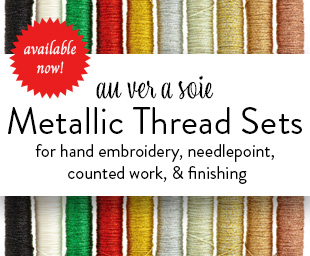
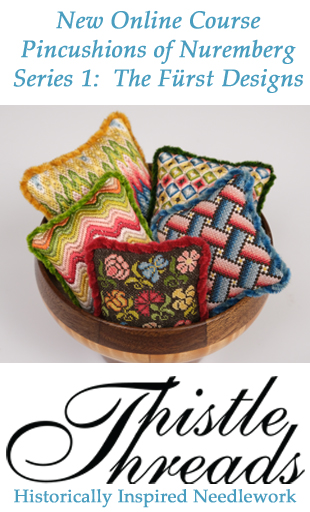

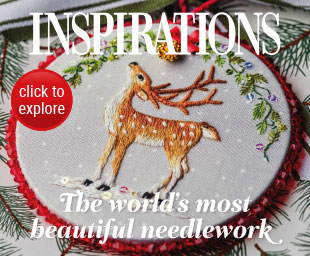
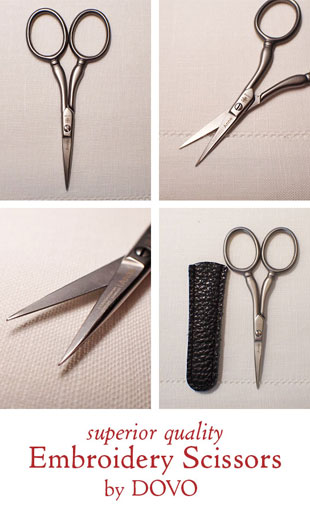
Is it washable?
Au Ver a Soie metallics are washable.
Dear Mary Corbet:
These metallic threads mentioned here–can they be used in tatted projects? What thread size (like size 20?) are they generally?
I am interested, as Handy Hands’ Liz Metallic Threads (for tatting) come in a rather limited array of colors currently, with some colors (as Xmas Green and Magenta) have been discontinued. They also have a tendency to fray rather badly if one undoes mistakes (as I rather do too often!). What is the yardage per spool and the cost per spool? Is there a discount if a number of colors are ordered in a bunch? Do you have all the colors in stock right now?
Thank you for your time in answering this email. I read Muskaan’s tatting blog, and your blog is one of the sites she mentions she visits herself! I used to do a lot of embroidery when I was a young girl, but as I pursued a career as a freelance musician (harp), I did far more sewing of clothes for gigs, and now I’ve been tatting since about 2022 as a COVID-19 hobby that’s continued. I also did plenty of crochet and knitting when younger also (scarves, hats, doilies) which I still wear. In fact, I still have several embroidered items I did as an adolescent and they still look pretty decent, I think! I learned to knit, crochet and embroider from my mother, and she made some Hungarian folkloric embroidered items that I have, including a dresser scarf and a vest, the latter which she never finished and which I worked on somewhat but haven’t touched in years! My mother was half Italian and half Hungarian in her ethnic background, and she made the Hungarian folk items as part of an Ohio Arts Council sponsored project that hired an expert Hungarian embroiderer and Hungarian wood carver back in the late 1980s or early 1990s, from what I can recall. Unfortunately I was in graduate school at the time (Kent State, Kent OH, MA Ethnomusicology 1994) and so couldn’t attend these classes then! I have no clue if and when I shall finish that Hungarian vest, but I have all the parts and threads to do it…..
Your work projects/kits look very nice indeed, but I shall have to limit myself to threads as I have a limited budget. I have to spend money on harp strings, sheet music and gas to travel to gigs (as I wear my own sewn items to these events), as I am sure you have to spend money on many items related to your profession as a an expert embroiderer! (Priorities, here…)
I look forward to your reply. I think the World of Craft is a good refuge in such turbulent times we are living in currently, and the community is very supportive and thoughtful and open to many ways of seeing and doing things. The artistic attitude is needed everywhere around the globe more than ever, and thru the internet more connected than ever too!
May the Arts and Crafts of life not only contribute to peace of mind and body, but to world peace too. All world leaders should practice a Craft or Art (like Churchill doing his painting)–perhaps it would keep them out of trouble a bit more, don’t you think?
Just saying…
Hopefully Yours in Tatting(?) Threads possibly, Alissa Pesavento
I prefer to not do online orders–instead, I like catalogs and/or order by phone to prevent web bandits stealing my information!
I’m not really sure that it would be suitable for a tatting thread – these types of metallics are not as supple as most thread used for tatting. I’m not a shuttle tatter, and I’ve only dabbled with needle tatting, so I’m not an expert. I’m not really sure, but maybe someone else out there will read your question and chime in!